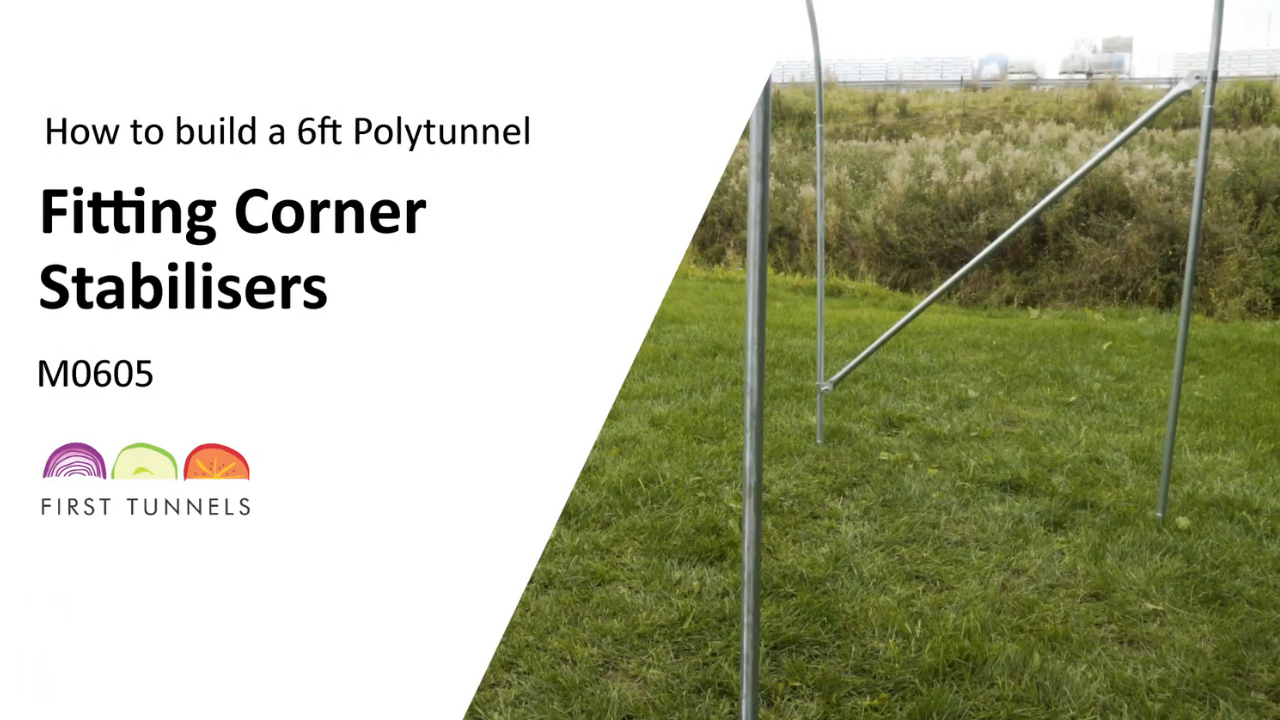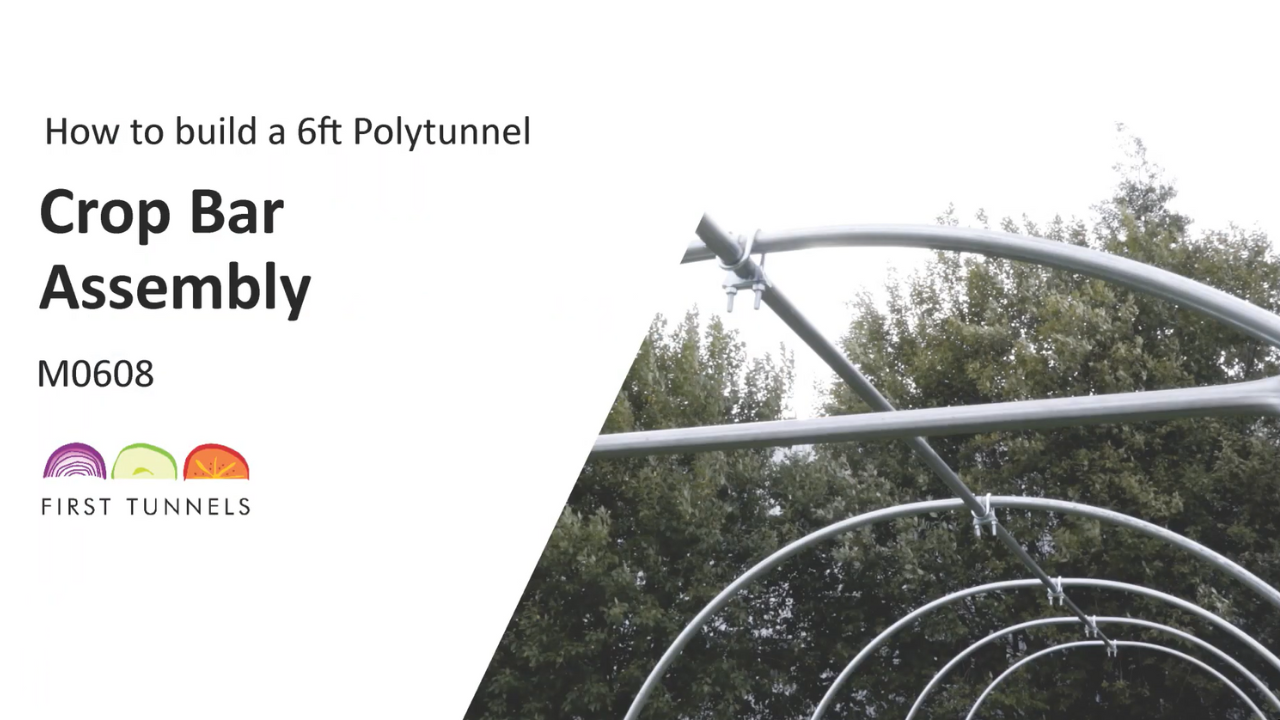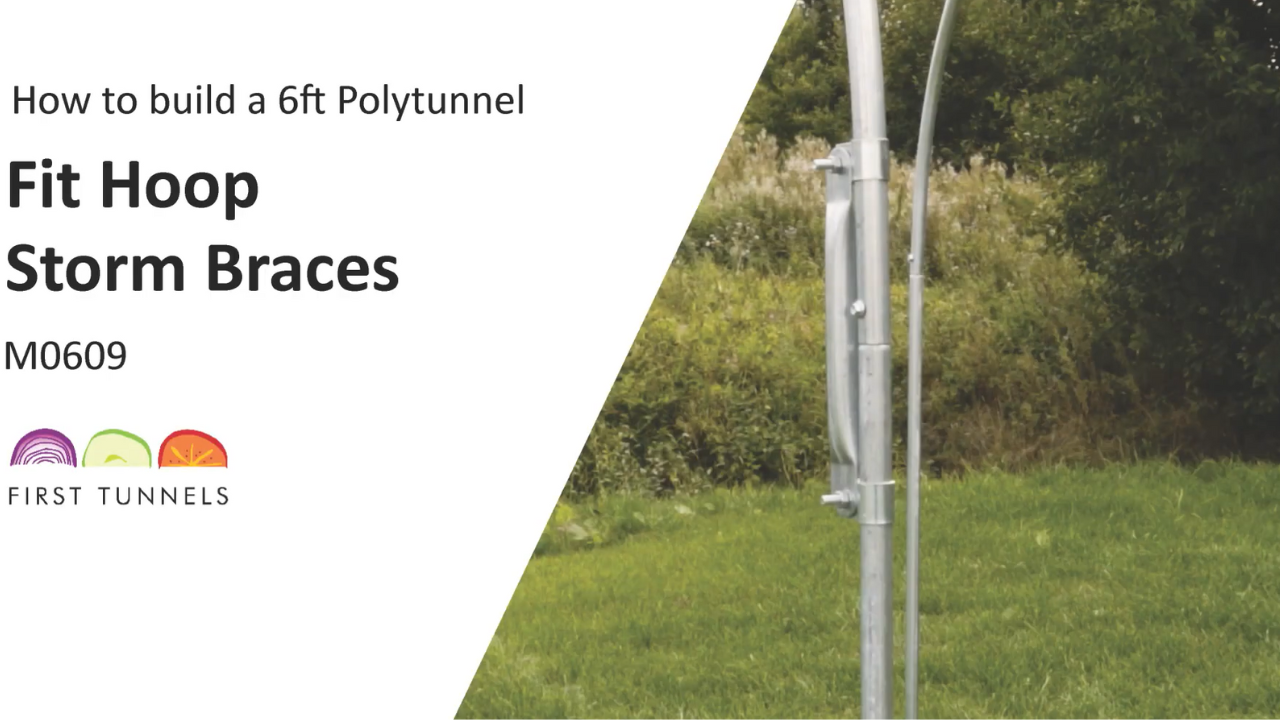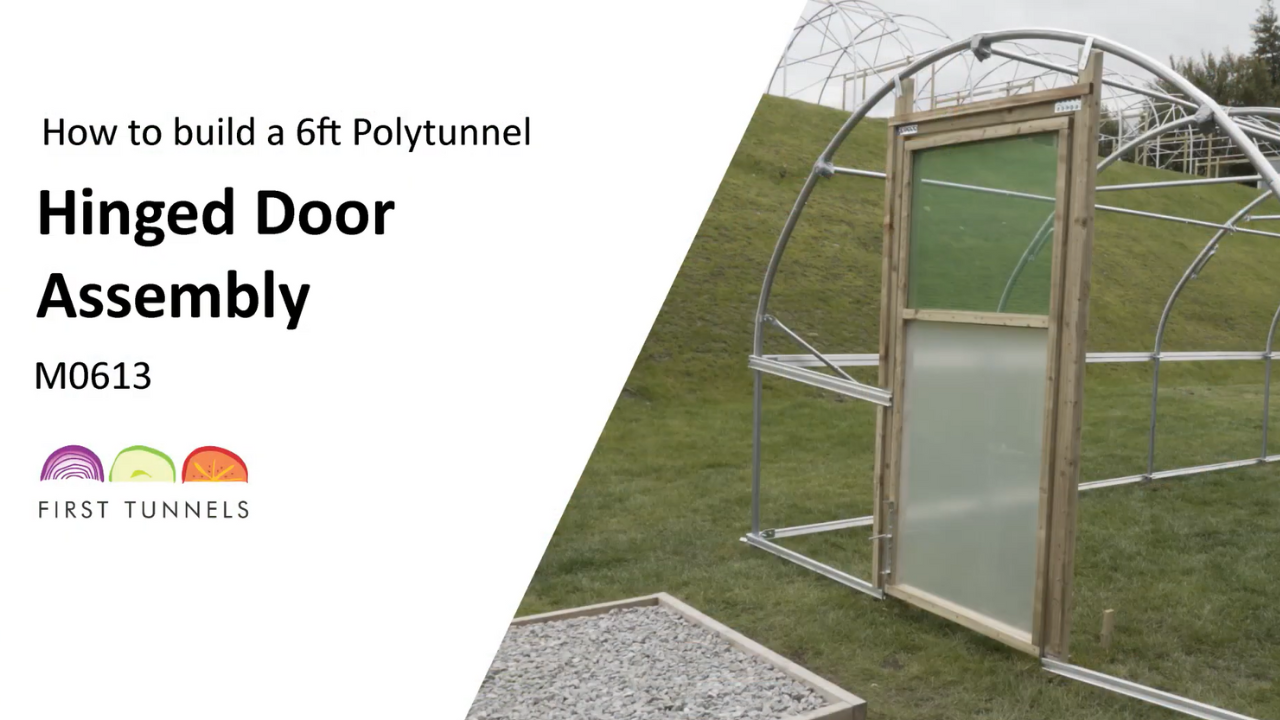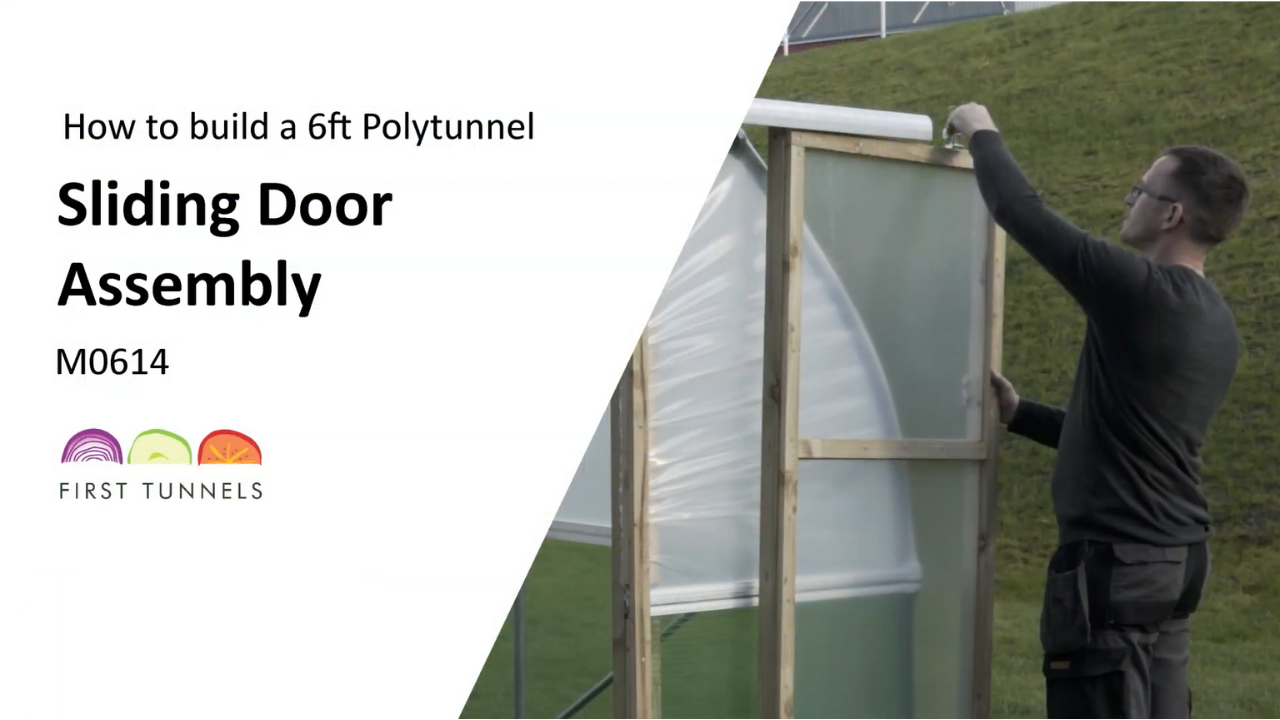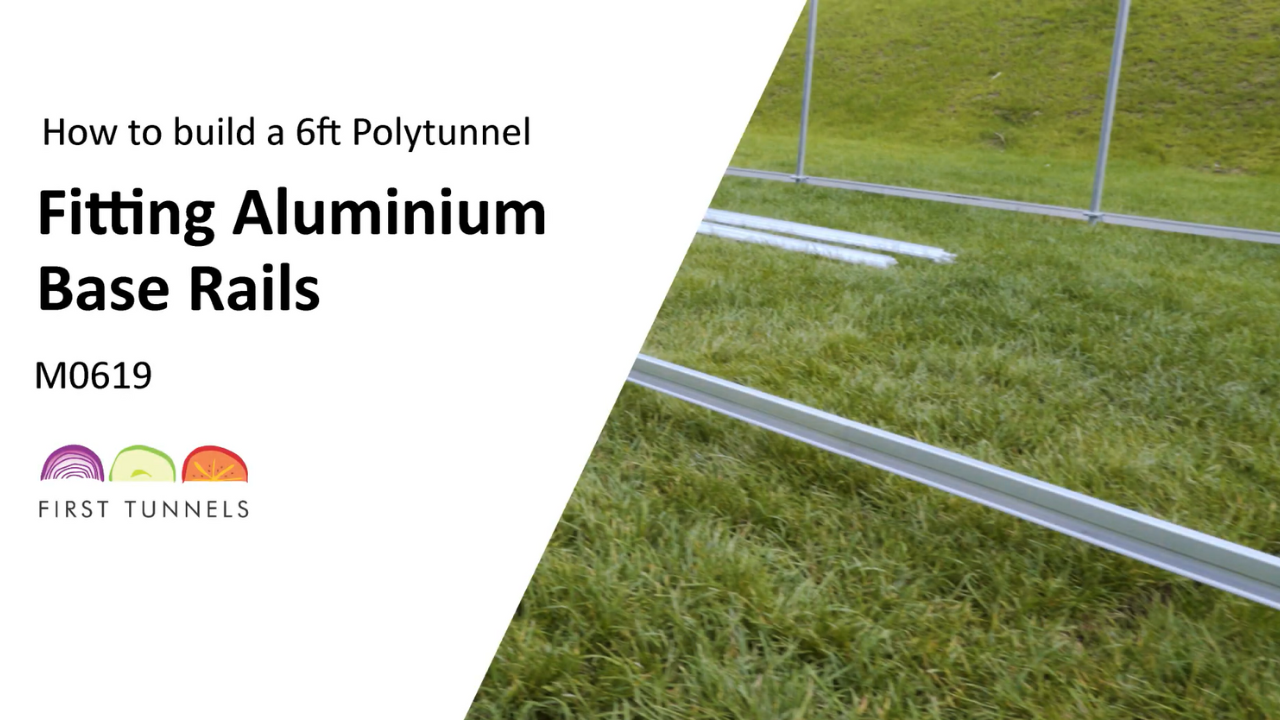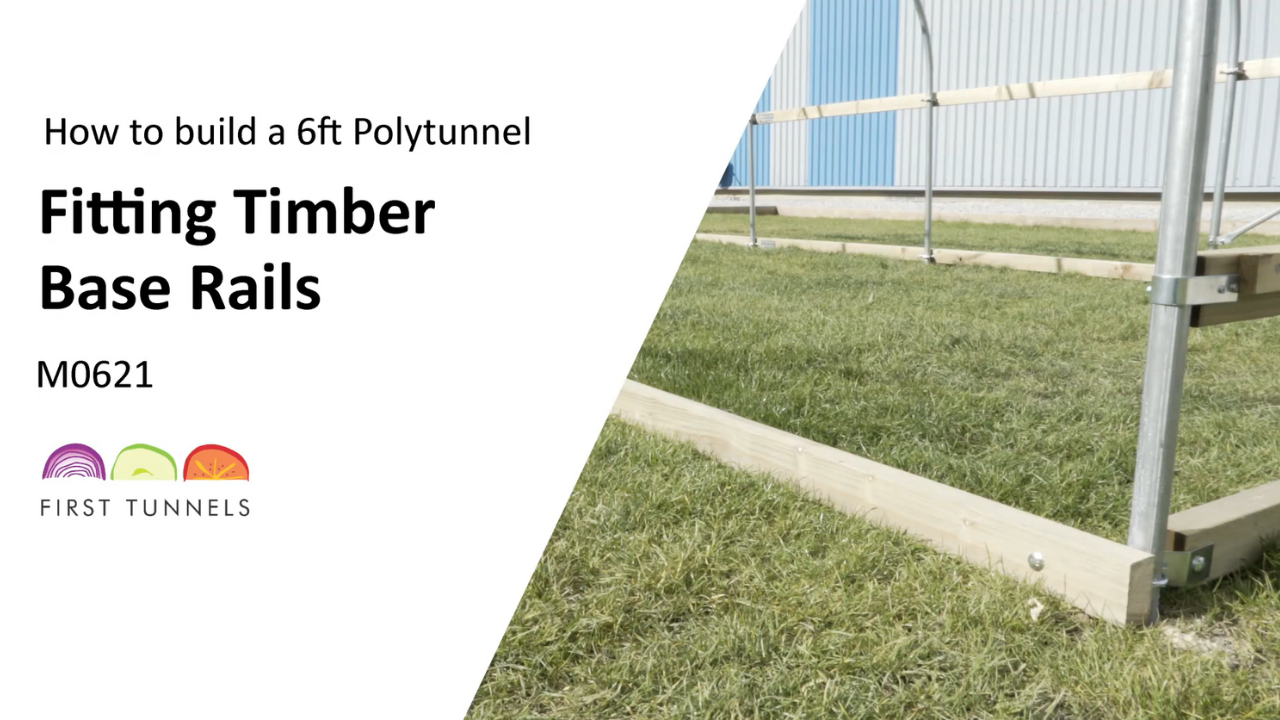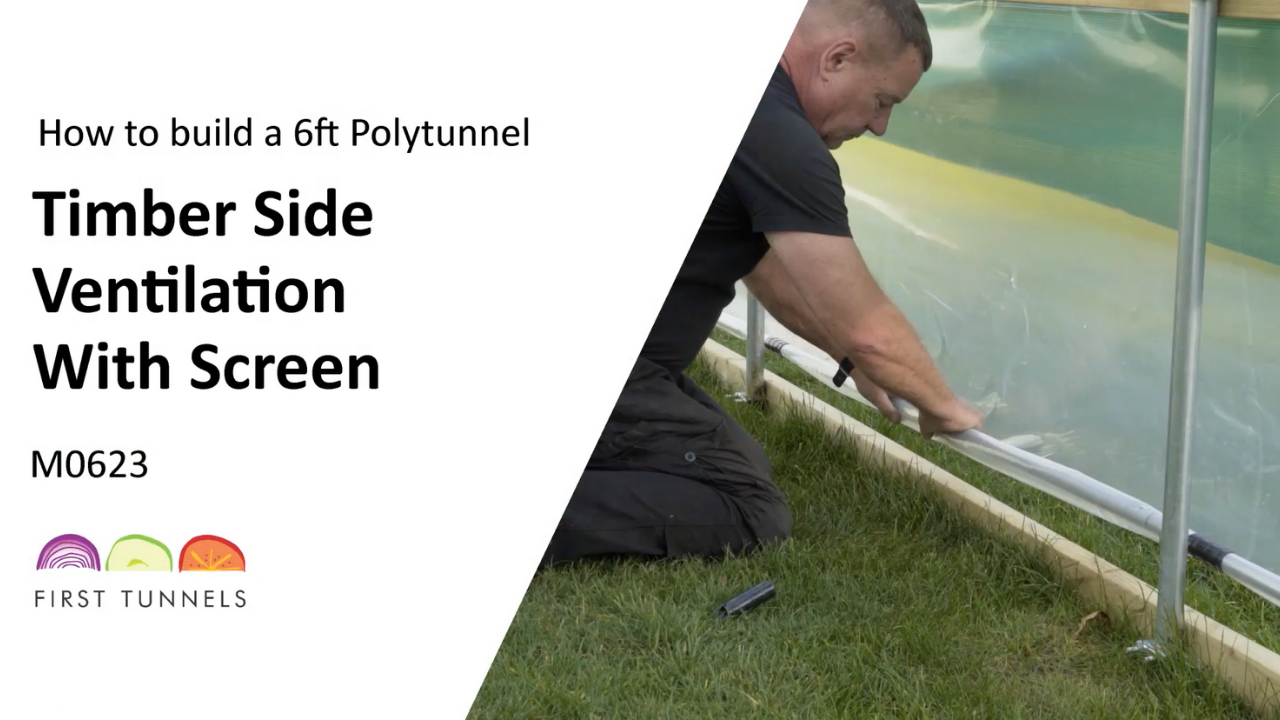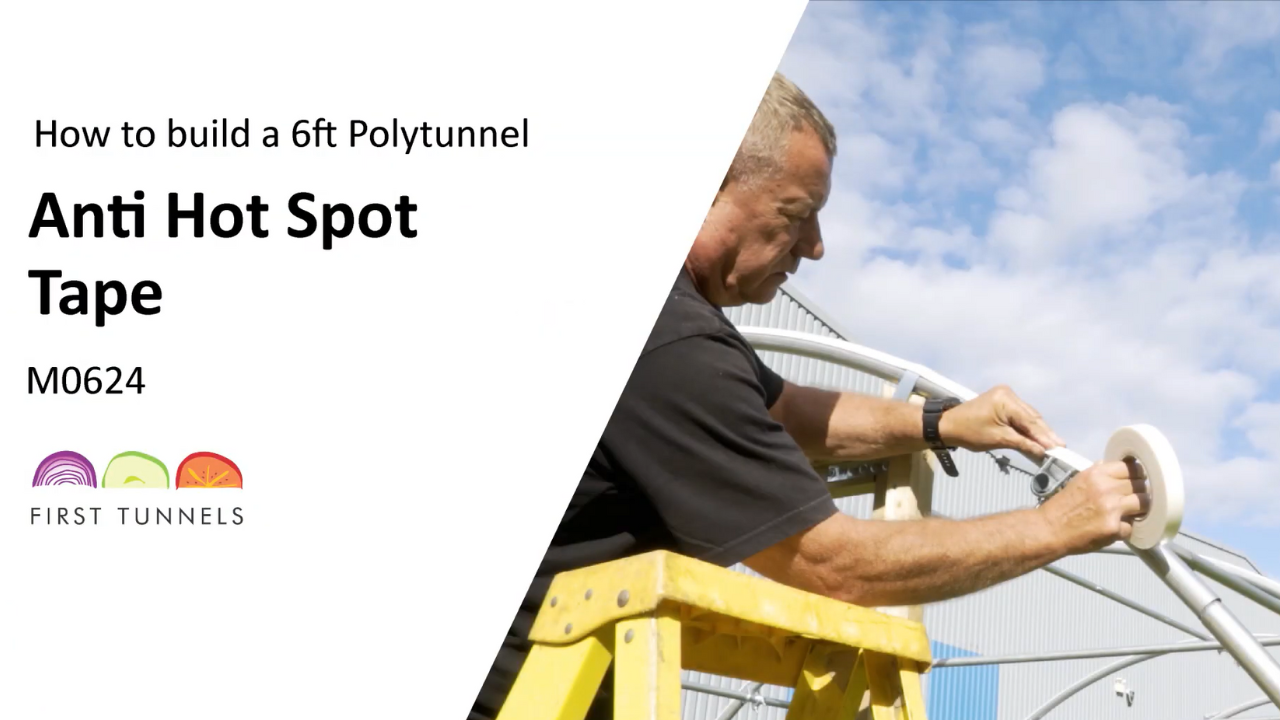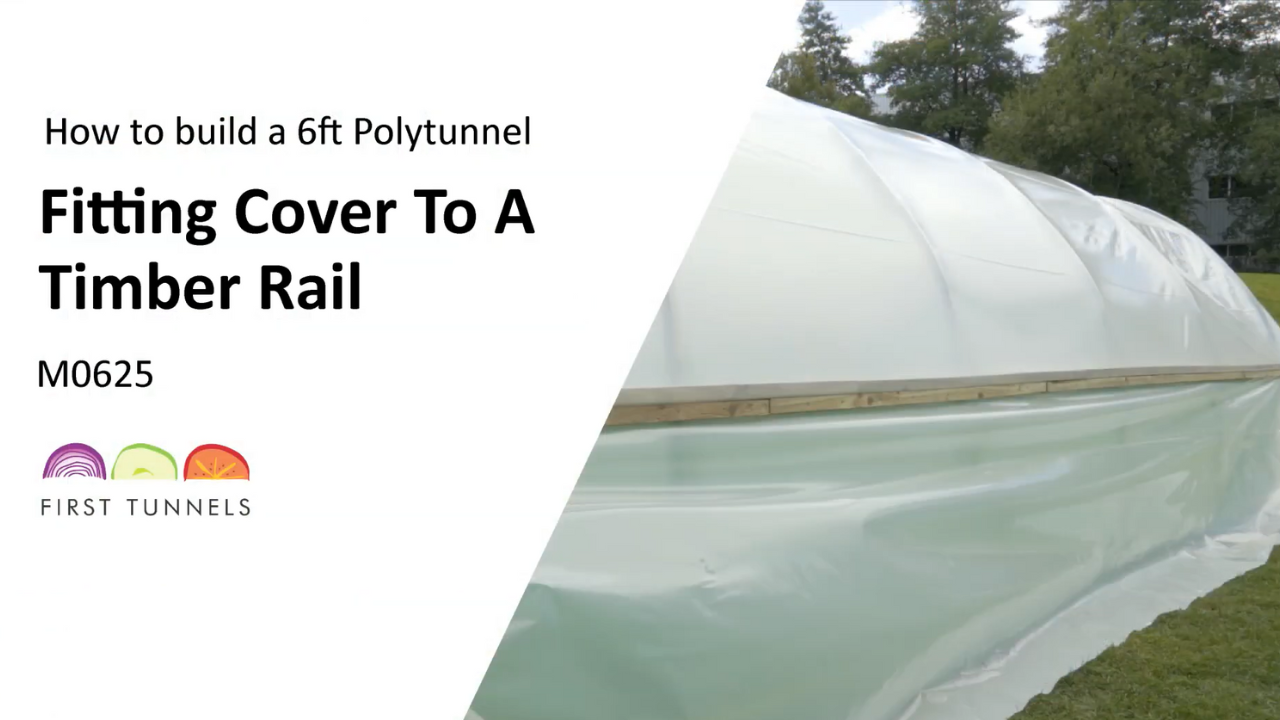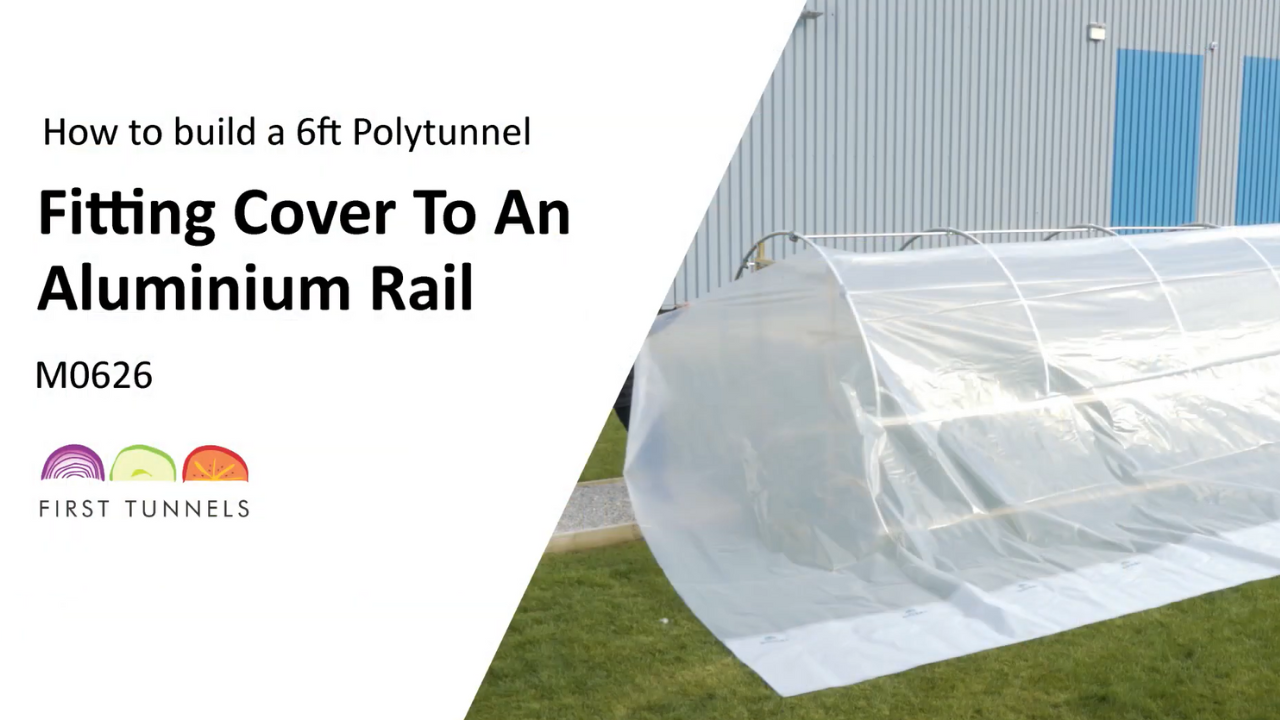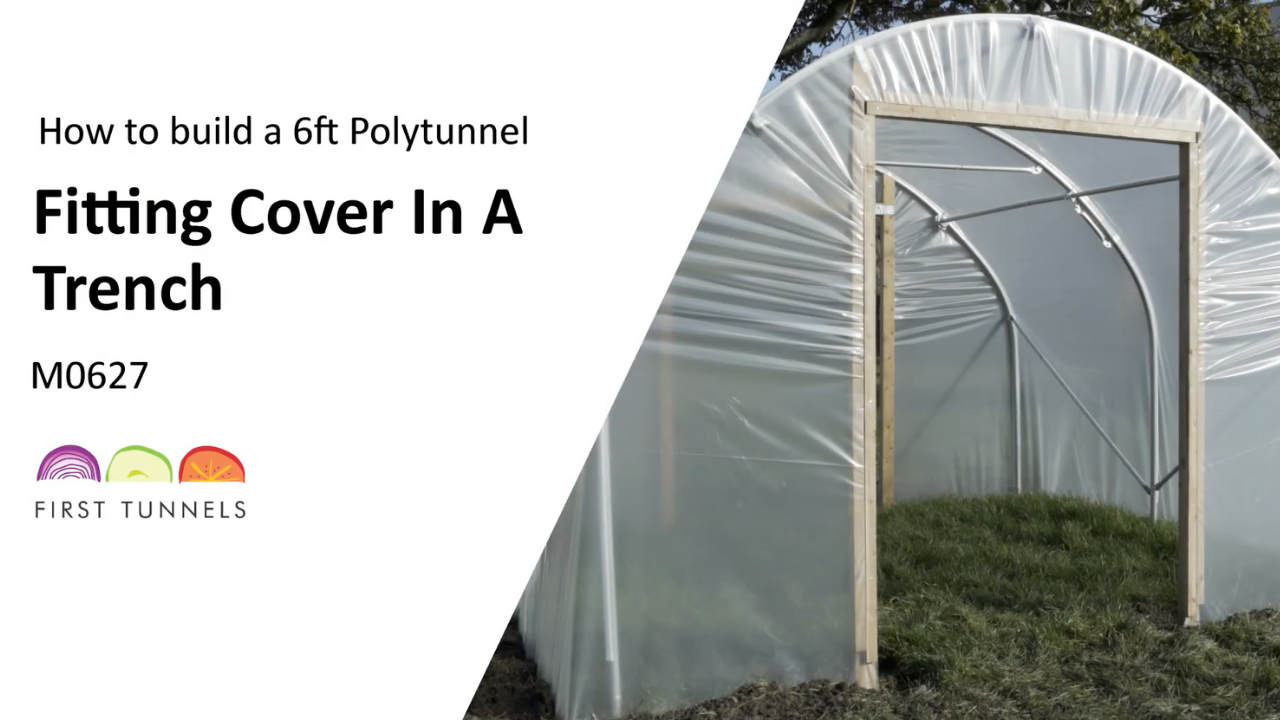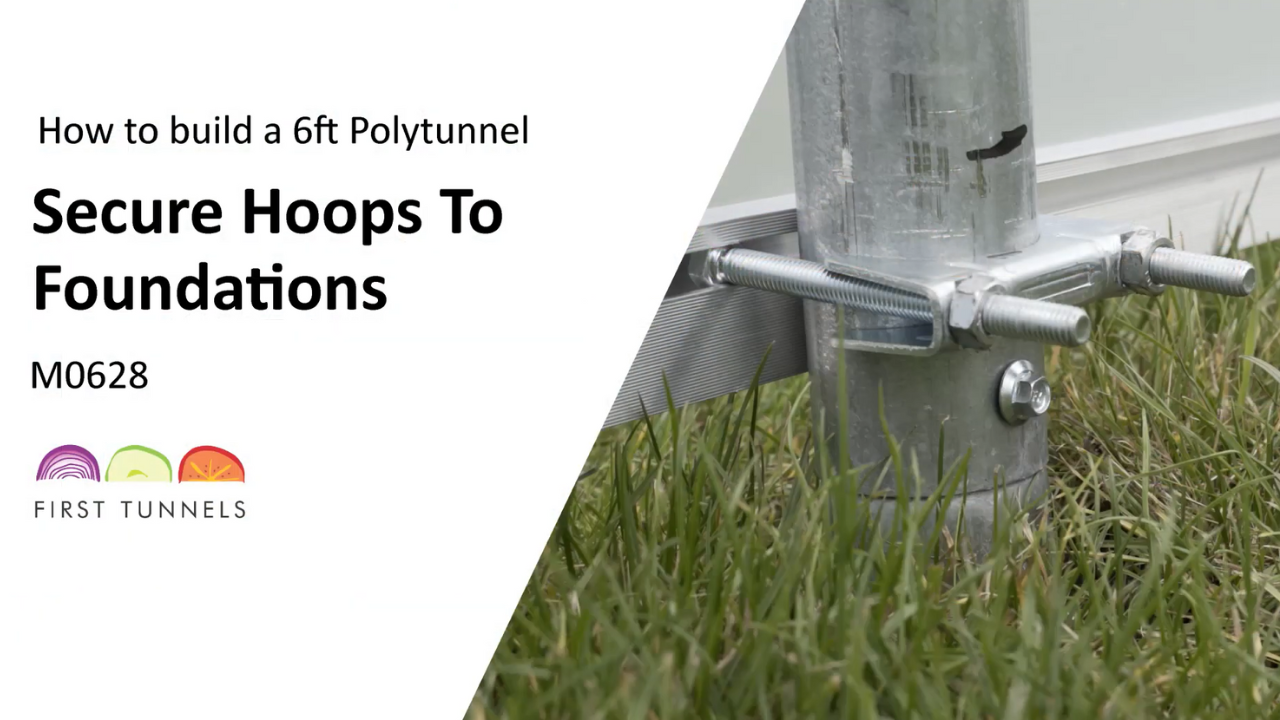You will be required to dig a trench around the outside of your polytunnel framework. Digging needs to start 10cm away from the foundation tubes and the edge should be as straight and tidy as possible as your cover will locate against this side (dia 21a).. It is important that the trench is 30cm wide and to a minimum depth of 40cm as the weight of the eventual back-fill keeps your polytunnel anchored to the ground (dia 21b).
The polytunnel cover is secured around the door frame by trapping it between a rebate batten and a sheeting batten. Battens are 19mm x 38mm timber and come in 1.8m lengths and you will be required to cut them to size (TIB18). The battens are secured in place using nails (CN50). First fit the rebate batten around the door frame, it is fitted on to the outer edge of the frame. Start by positioning a batten horizontally across the door frame lintel. Make one end flush with the outer edge of the door frame post and make a mark on the batten where it meets the outside edge of the opposite door frame post (fig 21c). Cut the piece to size.
Ensure when fitted the sheeting batten doesn’t protrude the inner edge of the door post. We recommend using a spare piece of batten as a spacer. Reposition the rebate batten on the door frame lintel. Position the spacing batten so it is flush with the inner edge of the door frame lintel. Once in position secure the rebate batten to the door frame lintel with nails. The rebate batten should overhang the outer edge of the door frame lintel by approximately 5mm. Now install rebate battens down the door post.
Position the rebate batten and use the spacing batten to ensure it is in the correct position and then secure in place with nails. Fit the rebate batten to the opposite door frame post in the same way and then repeat this entire process on the opposite end your polytunnel. Measure the length of batten that will be required to fit in between the inner edges of the door post and cut a piece of a batten 1cm short of this measurement to allow for clearance, keep these close to hand. You have now completed all of the preparation and are ready to start fitting your polytunnel cover.
Anti Hot Spot Tape should have been applied to all hoops before commencing the covering operation. Ensure you give yourself enough time to complete fitting your cover. This is not an operation to undertake alone. We also suggest that this is done on a calm day as heavy wind and rain will hinder the process. Only begin fitting your polytunnel cover when you are confident that it can be completed without unnecessary interruptions. Although the polythene is very strong and can withstand a lot of abuse, pulling and stretching the cover can sometimes leave finger marks. To avoid this spoiling your polythene cover, try to grip and pull the polythene on the outer edges, somewhere that will later be trimmed or buried into the ground.
NOTE: Check the ground for sharp objects which may damage the polythene cover. If you have enough room roll the cover down the length of your polytunnel. There is NOT a right or wrong side when choosing which face goes on the inside or outside of the structure.
Loosen the folds of the polythene cover. With one person at each end holding a corner, pull the cover taut and begin to slide the polytunnel cover over the hoops (fid 21d). From the corner of the polytunnel structure walk across the width to the corner hoop, the cover should slide up over the hoops smoothly. If you are short on space or have a very long polytunnel you can roll the polythene cover out on top of the polytunnel from one end to the other. You can then unfurl the polythene cover.
Centralise the polytunnel cover along both the length and the width of the polytunnel. The cover should reach approximately halfway down the door frames (fig 21e). Don’t expect the polythene to reach the ground at the door ends. With the polytunnel cover loosely in position it is time to start securing it into place. At one end, trap the polytunnel cover under the sheeting batten on the door frame lintel and secure the 15cm central section, approximately 3 nails (fig 21f). Do not nail the entire length of the batten to the frame at this stage.
Now go to the opposite end of your polytunnel, pull the cover tight along the length. You will need to get as much tension on the cover as possible, a good approach is to pull the cover down and swing into the polytunnel using your full body weight whilst your assistant positions the second prepared batten and secures the 15cm central section, approximately 3 nails (fig 21g). Next fix the polytunnel cover down the length. Simply lay the polytunnel cover in the trench. It is a good idea to perforate a few holes through the cover in the trench as this will allow rain water to drain away. Working from the centre to both ends, have one person use their foot to apply tension and another person to back fill the trench, packing the soil down as you go (fig 21h/i). Repeat this on the opposite side of your polytunnel, more downward force can be applied to gain extra tension.
To fit the two ends of the cover, cut the polythene parallel with the end hoop (fig 21j). This frees the polythene at the corner allowing pleating and fitting to the door frame post. Carefully pull the top door batten slightly away from the door frame lintel, pull down on the polythene and begin to tuck the polythene behind the batten. Secure a few nails at a time. Work from the centre to both sides until the door frame lintel batten is fully secure.
Next, secure the polythene cover to the door posts. You’re looking to achieve consistent pleats. We recommend you do a dry run to gauge the amount of pleats for an even distribution (fig 21k). The pleats start at the centre and dissipates as you reach the straight side of the polytunnel hoop. Position a batten down one of the door posts and hammer the first 2 or 3 nails in. Continue to pleat the polythene down the sides. Pull the cover as tight as you can and secure a couple of nails at a time. Keep working down the door post (fig 21l). Once the cover is secure to both door posts you can bury the polythene from the corner hoop to the door post into the ground. Using the same method as earlier, one person will push down with their foot whilst another person back fills the hole with soil. Repeat this process for the door on the opposite end of the polytunnel. Finally, trim off the excess polythene around the door frame and around the perimeter of the trench.



